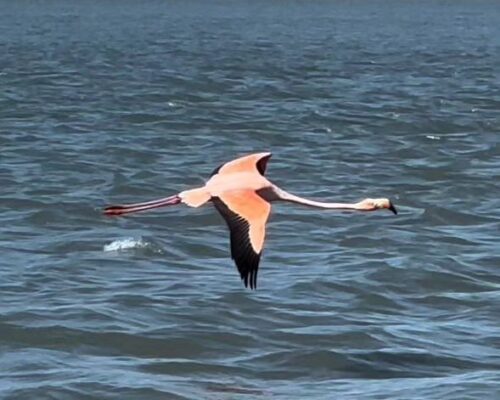Many boaters and Bay lovers seize the Memorial Day weekend as the start of boating season. But after a couple of scary incidents involving Jet Skis on the South River this weekend, safety experts are warning riders to be vigilant.
On Saturday morning, a 911 caller reported that a Jet Ski had crashed into a piling in the South River, close to Historic London Town & Gardens. The call came in just before 10 a.m. and the Woodland Beach Volunteer Fire Department responded with two fireboats along with Maryland Natural Resources Police (NRP). According to the Woodland Beach VFD, “The patient sustained major injuries that required the Maryland State Police Aviation Division to transport to Shock Trauma.” The helicopter landed at a local elementary school.
NRP says the Jet Ski operator was a 22-year-old man who was conscious but was critically hurt with head and leg injuries. NRP is investigating the case, but no cause has been released.
Just an hour after that critical crash, Woodland Beach VFD had to respond to another 911 call for a personal watercraft crash. This time, callers reported a Jet Ski overturned and people were in the water. The VFD responded and luckily no one was injured. The riders were helped back to land by one of the fireboats.
The VFD reminds riders, “Do not operate any watercraft while intoxicated, be aware of your surroundings for things such as other watercraft, debris and directional markers, wear Personal Flotation Devices (PFD’s) and obey speed requirements for the areas you are traveling.”
At our sister company, the Annapolis School of Seamanship, Capt. Matt Benhoff adds several more key insights for operating a personal watercraft (PWC) safely. In addition to a life jacket, Benhoff says riders must have their engine cutoff switch, so if they fall off the watercraft will stop.
Personal watercraft are much more dangerous than most boats, he argues:
“One of the big things that gets people in trouble on a personal watercraft is they operate at a lot higher speed than normal boats do. I can equivalate them to almost a motorcycle on the road,” Benhoff says.
“It’s easier to get into an accident when things are coming at you so quickly,” he notes.
Only some newer PWC have brakes. On most, you have to apply throttle when you’re trying to turn, rather than letting off the throttle, which may feel counterintuitive to some.
“So that’s where a lot of people get into trouble. If they need to swerve or miss something at the last second and they let off the throttle and turn the wheel—because that’s kind of a natural thing to let off the throttle—they don’t turn and they hit whatever they’re trying to avoid.”
A couple of lesser-known personal watercraft safety regulations riders should know about, according to Benhoff:
You must be 16 years old to drive a PWC. And despite some Jet Skis being capable of reaching 50-60 miles per hour, there are strict speed limits around potential hazards.
“One of the big things for personal watercraft is they cannot operate at speeds greater than 6 knots within 100 feet of other boats, piers, pilings, bridge structures, shorelines, people in the water or another personal watercraft,” Benhoff says.
-Meg Walburn Viviano




